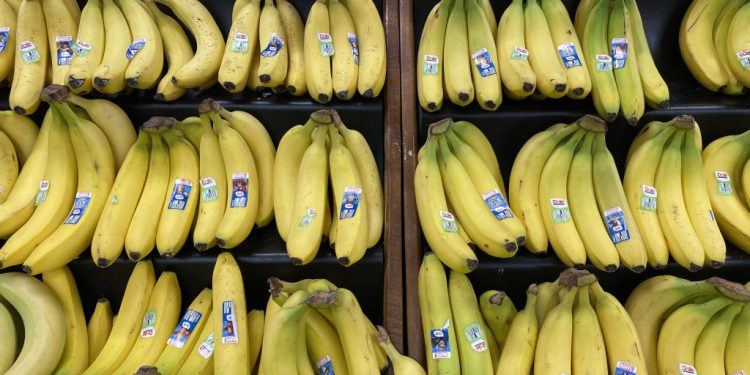Enjoy your bananas while you can — scientists have warned they could be going extinct due to a fungus infection.
Cavendish bananas, which consist of the majority of the bananas consumed by Americans each year, have been plagued with a fungal disease that is threatening to lead to the fruit extinction, scientists say, according to Business Insider.
A fungal disease called the Panama Disease (Fusarium wilt) tropical race 4 (TR4) has been attacking the Cavendish bananas, which are commonly found in supermarkets.
“It’s true that there is some resistance, but I’d say right now, nobody is even close to solving the problem,” Dan Koeppel, author of “Banana: The Fate of the Fruit That Changed the World,” told the outlet. “The answer is going to be the end of monoculture. The answer is variety.”
Scientists warn bananas could go EXTINCT https://t.co/C2fhs8M10v pic.twitter.com/kYlgsaseh5
— Daily Mail (@DailyMail) October 24, 2023
The fungal disease is “one of the most severe threats” that the banana industry faces across the world, according to Australia’s Department of Agriculture, Fisheries and Forestry website.
While there are more than 1,000 different types of bananas, Cavendish bananas have dominated the banana industry because they are resistant to major banana-killing diseases, they have a long shelf life and they take up less space for farmers to grow than other types of bananas do.
Koeppel noted in his book, that due to these reasons, the “Cavendish becomes a very practical product.”
TR4, which was first discovered in Taiwan in 1989, has spread to Australia, India, China, the Middle East and Africa.
The disease begins in the soil at the tree’s roots and is able to survive for many years. The disease then spreads and eventually prevents the plant from being able to have food or water, essentially starving it.
Another banana variety, the Gros Michel has been through a similar situation. The Gros Michel used to be the “main export banana in the first half of last century,” James Dale, a professor and leader of the banana biotechnology program at the Queensland University of Technology in Australia, told the outlet.
The Gros Michel ended up being infected by tropical race 1 in 1876 and in the 1950s, the disease had spread to many banana farms, forcing banana producers to search for an alternative.
Luckily, “the disease moves slowly,” Dale told the outlet, adding that “we have at least a decade before the impact is drastic.”
Scientists are currently looking at various solutions such as a genetically modified Cavendish, grafting tissue from one plant to another, and using seedlings from Cavendish bananas to expose them to TR4 in order to make them more resistant.
Koeppel noted that the best solution to preventing Candehish bananas from going extinct would be to produce them in large quantities and have a variety of the types of bananas sold, pointing to apple varieties in supermarkets.
“Apples are a huge example of this,” Koeppel said. “Today, if I go to any supermarket in the U.S., I will find between five and 30 apple varieties. Apple growers are going nuts trying to introduce new varieties naturally as well as through hybridization and genetic modification.”


























 Continue with Google
Continue with Google